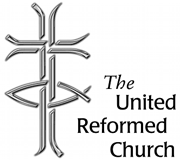An introduction to the United Reformed Church, a Trinitarian church found in England, Scotland and Wales: its structure and history in the British Reformation and Evangelical Revival.
United Reformed Church
Last updated 2009-06-25
United Reformed Church
United Reformed Church
 Logo of the United Reformed Church ©
Logo of the United Reformed Church ©
Across England, Scotland and Wales, the United Reformed Church has nearly 100,000 members and regular worshippers, in 1600 local congregations.
The United Reformed Church shares the Trinitarian tradition and creeds of all the major Christian denominations. The Bible is taken to be the supreme authority for the Church, together with certain historic statements of the United Reformed Church.
Respect for individual belief and a conviction that majorities are not always right mean that the Church is not dogmatic and embraces a wide variety of opinions.
The United Reformed Church takes the name 'Reformed' because it has its roots in the Reformation of the 17th Century, but also because it seeks to be continually reforming, to equip itself to be a Church for today. It is part of the worldwide family of Reformed Churches, which has a total membership of around 70 million people.
It has a strong commitment to church union and the ecumenical movement. Its local churches are often partnerships with other denominations, and in some parts of England, local United Reformed and Methodist churches work together in what is termed a United Area.
History
The United Reformed Church was first formed in 1972 by a union of the Presbyterian Church of England and the majority of churches in the Congregational Church in England and Wales. It was joined later by the Re-formed Association of the Churches of Christ in 1981 and the Congregational Union of Scotland in 2000.
The oldest churches have a history going back to the 17th century and the Reformation. Other congregations were formed during the Evangelical Revival in the eighteenth century or by denominational expansion in the nineteenth and early twentieth century.
Churches were opened in new housing areas in the late twentieth century, but many of these were joint ventures with the Church of England, the Methodist Church and the Baptist Union.
More about the Reformation
In this radio programme, William Dalrymple explores the Reformation's effect on popular conceptions of the Divine, on humanity's place in the world and on British identity.
In order to see this content you need to have both Javascript enabled and Flash installed. Visit BBC Webwise for full instructions
Structure
The Church sets a high value on individual conscience and the ability of its members to reach common understanding. Local congregations hold meetings to govern their affairs, with a group of elected elders having day-to-day responsibility.
There are thirteen synods: the national synods of Scotland and Wales and eleven regional synods for England, in which all local churches are represented.
A General Assembly, representative of members, meets bi-annually (annually until 2008) and makes policy decisions after consultation and debate. All these meetings are held in the belief that the Holy Spirit guides members of the Church in their decision-making.
The formal leadership of the General Assembly is provided by two moderators who serve together for two years, in an honorary capacity. They are elected by members of the Assembly. One moderator is a lay person and the other a minister.
A permanent staff, led by the General Secretary, services the Assembly and its committees. The thirteen synods have their own synod moderators and staff to support the work of local churches. These are usually grouped together under the pastoral care of a paid minister, a man or woman, although the Church also ordains unpaid ministers.
All churches contribute to a central fund from which ministers are paid a stipend to cover their living costs.
Around the BBC
Elsewhere on the web
BBC iD
BBC iDBBC navigation
BBC links
BBC © 2014 The BBC is not responsible for the content of external sites. Read more.
This page is best viewed in an up-to-date web browser with style sheets (CSS) enabled. While you will be able to view the content of this page in your current browser, you will not be able to get the full visual experience. Please consider upgrading your browser software or enabling style sheets (CSS) if you are able to do so.